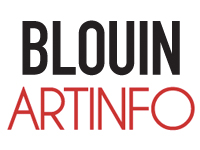
By Anneliese Cooper
Photography, by nature, lifts individual moments out of the rush and motion the day-to-day — it holds images in place, makes them wait. But the stillness imposed upon the scenes constructed by Dutch photographer Erwin Olaf is a particularly eerie one; his portraits are tinged with the same off-kilter sheen that turns little girls to horror villains in movies like “The Shining.” Indeed, there are several such iridescently pale and dress-clad bodies scattered throughout the artist’s current show, “Waiting,” on view at Hasted Kraeutler — perhaps most notably the image that begins it, which shows a young girl’s hunched back, rigidly symmetrical and centered, her hands clasped tight behind her, shoulder blades threatening to slice through the fabric, narrative filling the empty space around her.
Included in the exhibition is Olaf’s latest work, from which the show takes its name. And though that piece happens to be a moving image, it’s a relatively still one. The film “Waiting” shows a young Asian woman rendered in crisp black and white, sitting at one side of a table for two in a high-end restaurant. She is clearly anticipating a partner — and proceeds to do just that for 50 (yes, 50) minutes, almost unmoving save for small, natural shrugs and the slight drifting of her expression from expectant to crestfallen. A commissioned requiem plays within the black-box viewing hut, an oblong structure with angled-out walls that host two adjacent screens which show different perspectives on the scene. Outside the box are stills from the film, delicate close-ups of the actress’s face that tell a decent chunk of the emotional story on their own.
“His work for the most part is about a state of limbo — after something has been said or done, but before the person has reacted,” said gallerist Sarah Hasted, who has worked with Olaf for 10 years and produced two books, “Erwin Olaf: Volume I & II,” selections from which make up the bulk of the exhibition. (The mini-retrospective on view is, in part, a celebration of their decade spent working together.)
Olaf is also a relatively prolific advertising photographer — think the sleek “Masters of Sex” campaign that splattered New York City subways not too long ago — and that affection for slim, hyper-beautiful bodies does bleed through to his fine art work. Still, like “Waiting,” even the most picturesque photographs here harbor an awful sense of possibility: a woman sits alone and shoeless in an elegant apartment, her coiffed hair silhouetted against a picture window; a little boy in a scout’s outfit stands in an ice cream shop, dog at his side, one sock falling partway down his shin, and pink ice cream dripping down his cone.
A particularly morbid self-portrait triptych that serves as the exhibition’s end shows the artist in three states: as he would like to be (shirtless, buff, staring down the lens like it owes him), as he is (salt-and-pepper mop, skin slightly more lived-in), and as perhaps he will be (nose plugged with a respirator, hair an Einsteinian shock of grey, eyes haunted). Though this work out of all on view threatens some sort of temporality, it’s still a fantasy; the artist remains trapped in between, penned in by expectation and decay. Another limbo, then — one from which it’s almost worse to emerge.